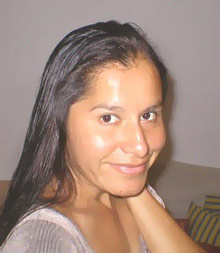 |
 |
 |
 Vallarta Living | April 2005 Vallarta Living | April 2005  
Spanish Classes for Native Speakers
 Associated Press Associated Press


| | Lupita Ramirez is a certified teacher with a degree in Modern Languages from BUAP (University of Puebla). She teaches private English and Spanish lessons to people of all ages around the Banderas Bay area. Contact her at Lupita@BanderasNews.com |
Rosa Perez chats easily in Spanish, but the 15-year-old - having arrived in the United States more than a decade ago - never learned to write in her native tongue.

That's a skill she and a growing number of Hispanic students in public schools and colleges are working on in classes often called Spanish for Native Speakers, which aim to make students biliterate as well as bilingual.

For Perez, who attends Emporia High School, the early results have led to writing letters to her aunts and cousins in Mexico. Her parents, both workers at a Tyson Foods Inc. meat packing plant, were thinking ahead to a potential career for their daughter when they encouraged her to take the class.

"They said, since other people get good money translating, maybe I could do that," said Perez, who wants to become an elementary school teacher and work with Spanish-speaking youngsters.

Hospitals, schools, police departments and many corporations are clamoring for bilingual workers, and language experts believe classes like the one Perez takes could help fill the need. By 2050, studies suggest, Hispanics will constitute 25 percent of the nation's work force.

The classes have been offered since the 1980s by many schools in the southern border states such as Texas and California. They have grown increasingly popular, however, as more and more immigrants moved north, to the Midwest and even the Northeast.

Ana Roca, who teaches Spanish and linguistics at Florida International University in Miami, recently offered advice to a college professor in Maine about teaching native Spanish speakers.

"Now, a few years ago, if you had told me someone from Maine would want to meet to talk to me about issues regarding starting a Spanish for native speakers section, I would have said, 'Maine. That doesn't sound likely.' But it is," said Roca, who co-edited a book, "Mi lengua: Spanish as a Heritage Language in the United States."

The American Council on the Teaching of Foreign Languages estimates about 141,000 middle- and high-schoolers in 2000 were enrolled in Spanish classes designed specifically for native Spanish speakers. The group is conducting another survey this year and expects a significant increase.

At the high school level, the courses often resemble traditional language arts classes with an emphasis on grammar, vocabulary and writing instruction in Spanish. At the elementary level, the classes often include English and Spanish speakers learning one portion of the curriculum in one language and the rest in the other language, said Marty Abbott, the council's education director.

When done well, she said, the classes can help Spanish speakers - a group with traditionally lower-than-average test scores and above-average dropout rates - connect with their schools. She said there has been a rise in native Spanish speakers taking Advanced Placement Spanish courses - and succeeding.

"I think that helps students see an academic vision for themselves, that there's a reason to stay in school," she said.

The classes aren't without their challenges. Students come from different Spanish-speaking countries and different regions, each with its own dialect. Some children arrive in class just days after arriving in the United States, while others were born in the United States and grew up speaking mostly English.

In Emporia, teacher Daniel Sanchez's class includes five or six newcomers. Some don't have an academic background in English or Spanish, leaving them struggling to write in either language. Sanchez switches back and forth between English and Spanish to reach both newcomers and the students who grew up in America.

Sanchez talks with his students about his own struggles learning English. He immigrated to the United States from Mexico when he was in high school so his parents could work at a meatpacking plant in Garden City in western Kansas. He also worked at the packing plant during his last semester of high school and summers in college.

"If a few students can benefit from learning a more academic Spanish that can be used in the work force, it's always a benefit," he said, "not just to a certain group but to everyone." | 
 | |
 |



